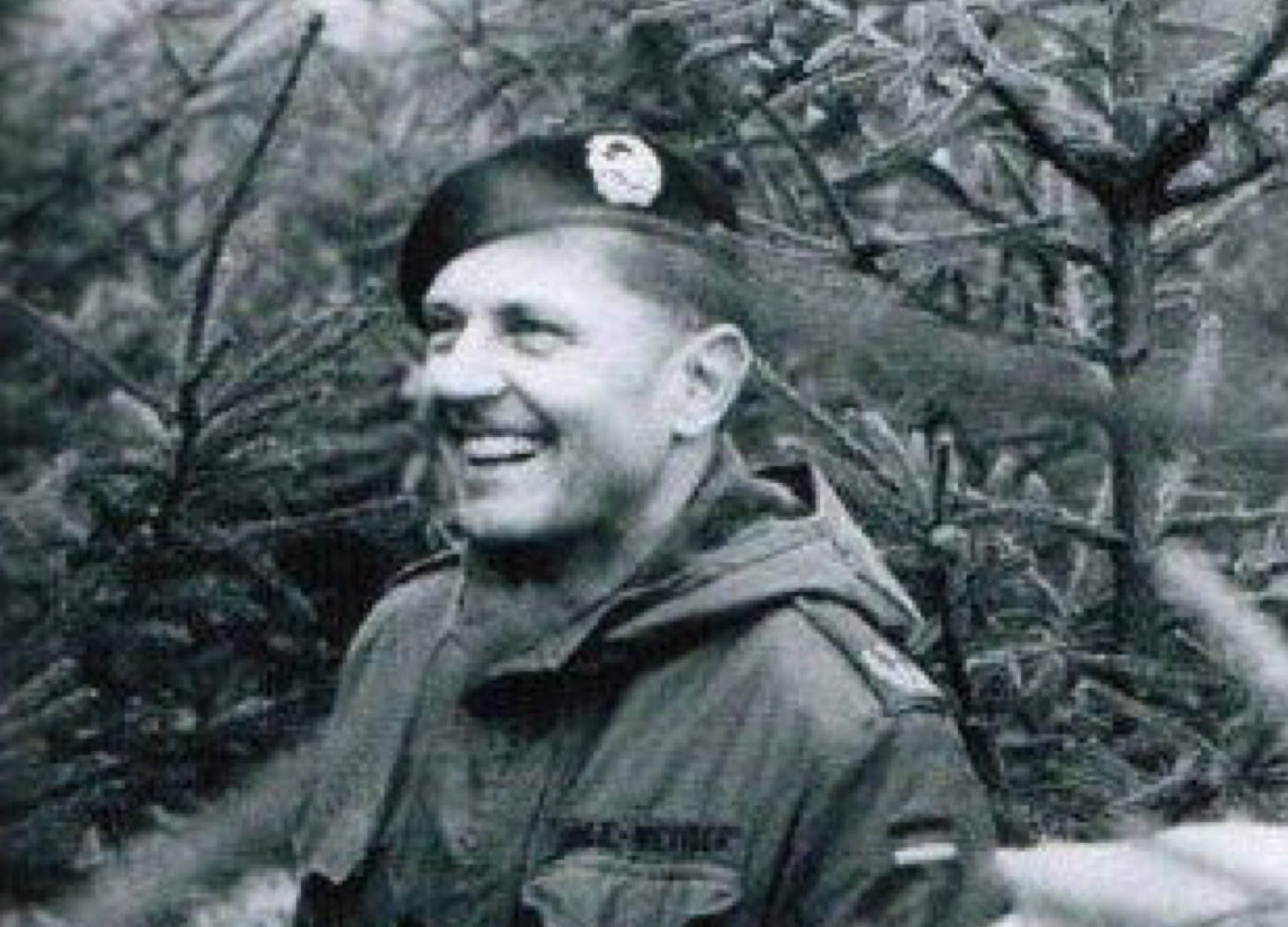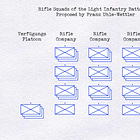In the territorial light infantry battalion designed by Franz Uhle-Wettler, the “command and supply” company consisted of a substantial supply echelon (Versorgungs Staffel ) and a number of autonomous elements. The latter include the battalion command group, the finance section, the staff group, the driver team, the company leadership group, the long-range communications platoon, and the Verfügungs platoon.
A close copy of the rifle platoons of the ordinary sort the Verfügungs platoon did for the battalion was the Verfügungs squads did for rifle companies. That is, it provided a fully-fledged infantry unit to perform tasks that would otherwise have required the detachment of elements from a rifle company. (In addition to serving as a quick-reaction force and conducting patrols, this “thirteenth platoon” could also be attached to a rifle company that had been given a task that required four full platoons.)
The principal staff officers of the battalion bore the standard NATO titles of S-1, S-2, S-3, and S-4. The roles played by the officers bearing these designations, however, differed from those of their American counterparts. In particular, the S-3 (operations officer) and the single officer who served as both the S-1 (adjutant) and the S-2 (intelligence officer) belonged to the command group. The S-4 (logistics officer), however, commanded the supply group.
The battalion had neither a second-in-command nor a chief-of-staff. It did, however, possess an Ordonnanz Offizier. Not to be confused with an “ordnance officer,” this “ordinance officer” served as the right-hand man of the commanding officer. As such, moments of crisis or opportunity might find him serving as an “empowered messenger,” in command of a task force of some sort, particularly one around the Verfügungs platoon or assembled from the wreckage of hard-hit elements of the battalion.
The staff group consisted of three sergeants, two clerks, and a draftsman. Each of the sergeants handled routine matters for one of the staff functions, thereby enabling the principal staff officers of the command group, the S-1/2 and the S-3, to move about the battlefield as their duties required. (Uhle-Wettler was particularly keen to keep the battalion headquarters from turning into a “tent city.” “A battalion that goes to war with map cases, bundles of documents, manuals, and classified material safes,” he wrote, “is an absurdity.”)
Consisting of one sergeant and six men, the driver team operated the one truck allowed for each company and the small number of civilian vehicles requisitioned at the start of the war. These vehicles supported the battalion as a whole, rather than the command and supply company or any particular element within it.
In the absence of large numbers of vehicles, each of the elements of the command and supply company was, like the heavy weapons squads, provided with a sufficient number of men to carry all of its equipment. Thus, for example, the long-range communications platoon, which operated a small number of radios, consisted of one officer, eight sergeants, and 33 men.
The supply echelon was primarily concerned with providing “house-keeping ” services for the battalion: delivering food and ammunition, , maintaining clothing and equipment, and caring for the sick and wounded. To this end, it consisted of an S-4 team, a material supply team, a medical squad, a clothing team, a food supply squad, a communications equipment team, a weapons repair team, a transport platoon, and an ammunition team. (As ammunition was delivered to the battalion by vehicles belonging to the brigade supply organization, the ammunition team devoted most of its energies to the storage and issue of ordnance than to its transport.)
The food supply squad obtained food from the area in which the battalion operated, sometimes from local farms and sometimes from caches that had been prepared ahead of time. It did not, however, prepare meals. For the sake of cohesion and dispersion, as well as quality and economy, that task was left to squads and teams. (“If you have any experience with troops,” wrote Uhle-Wettler, “you know that they will eat well.”)
Source:
Franz Uhle-Wettler Gefechtsfeld Mitteleuropa , Gefahr der Übertechnisierung von Streitkräften (Munich: Bernard & Graefe, 1980)
You can find the typescript of a translation of this work into English at the Military Learning Library and in this folder on a Google Drive.
For Further Reading:
To Subscribe, Share, or Support:








